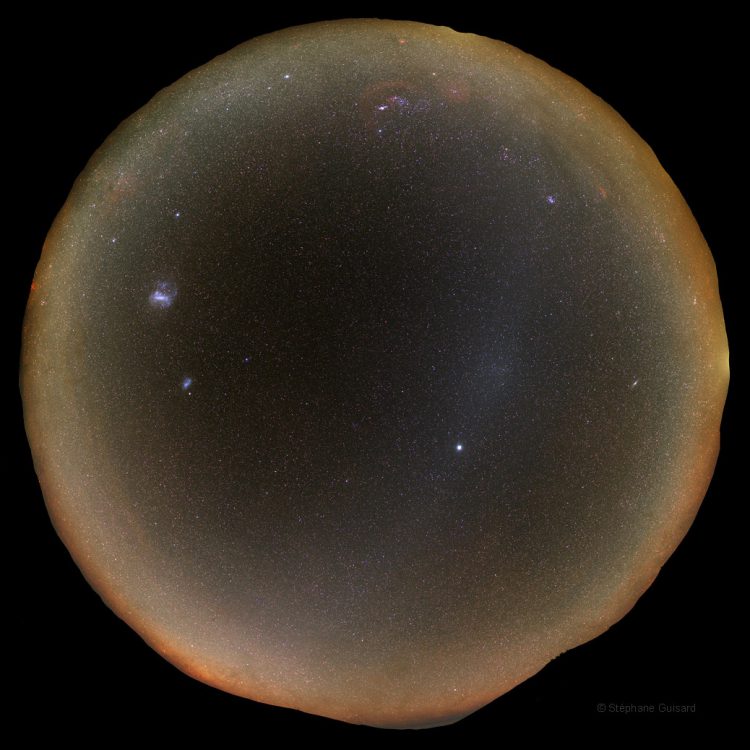Darkest Possible Sky
Description
As seen on National Geographic News dark starry sky is an essential beauty of our natural environment but it is also astronomically important. Skyglow above many of us does not allow to see the darkest possible sky. Skyglow is caused by light pollution, moonlight, twilight, aurora, the zodiacal light, and in minor effects bright planets and starlight (Milky Way and individual stars), and airglow. To achieve the darkest possible sky TWAN photographer Stephane Guisard found a location in the Atacama Desert of Chile, not far from Cerro Paranal observatory (the mountain on the lower right), where there is no light pollution all around the horizon. He selected a new moon night (no moon) and made the image around mid-night (no twilight and minimum brightness of zodiacal light) and he selected a time when the Milky Way has touched all around the horizon with the minimum share in causing airglow. So the light around the horizon in this all-sky view is not from urban areas, its the disc of our home galaxy, the Milky Way (similar condition is possible to achieve in March and April in the northern hemisphere). In this extreme dark sky there is only a patch of light still glowing on the right side, stretched at both sides of Jupiter (the brightest object in this view). This is what has remained of the zodiacal light in this dark mid-night. Zodiacal light is reflection of sunlight from dust in the solar system plane. It decreases in intensity with distance from the Sun, but on very dark nights it can be observed in a band completely around the ecliptic (as visible in this image). A slightly brighter region of the zodiacal band is an oval glow directly opposite the Sun and known as the gegenschein (German for “counter glow”) which might be seen with unaided-eye under very dark skies. It is clearly visible above Jupiter in this view. There are many other sights in this image. On the left the Large and Small Magellanic Clouds, satellite galaxies of our Milky Way, are visible. At top is Orion and the red glow of Barnard’s Loop. The Andromeda Galaxy is also easy to see on the right. As added by the photographer “The chosen place has the particularity to be located at a latitude which value is close to the declination of the galactic southern pole. Therefore the picture was taken when the galactic pole passes at zenith, ensuring that there is no Milky Way up in the sky.

comments (18)